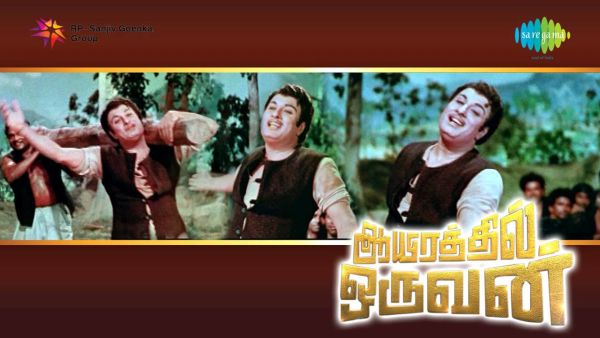2022-02-16
An imaginary island. A handful of people forced to serve under an evil man. His compassionate daughter eyeing the leader of the forced labourers. Makings of a great masala movie.
Yes, this was the point where, the leader of the forced labourers, the Tamil Matinee idol, MGR (Actor MG Ramachandran) sang on screen “Yen endra kelvi ingu ketkaamal vaazhkai illai” or “There is no life without asking the question ‘Why’”.
This song was from the movie “Aayirathil oruvan”, the 1965 blockbuster.
The question “why” is very essential not only in that movie, but in Design Thinking as well.
Design Thinking, as a skill, can be learnt by practicing the methodology on real world problems. I run an online course on Design Thinking on a Govt. of India platform called SWAYAM where close to 32,000 learners have learnt Design Thinking already.
What I have got in return (apart from lots of love 😍) is the variety of questions that have been asked by so many curious learners. This Ask the DT Doc series can be helpful to anyone – a beginner, intermediate or advanced learner of Design Thinking. (Also checkout https://dt.balaramadurai.net for the book on Design Thinking)
This post will cover the question “How do I apply the Multi-Why technique in a complicated problem and in a large team?”

Question
Dear Bala Sir,
Greetings!!
How do we approach the 5 WHY’s process when we have multiple problem statements as this becomes very lengthy and cumbersome , specially when we have a group of 8-10 people doing 5 why’s together and each one of them has a different why at each level.
Kinldy provide detailed explanation to this problem.
Also would want to know if there is an alternative for conflicting parameters technique,then I’m open to explore that as well.
Thanking you in anticipation.
Warm Regards, Nilay Shah
https://groups.google.com/a/nptel.iitm.ac.in/g/noc19-mg60-discuss/c/YW_wlY5uDPs/m/RCdGYGEdAQAJ
My response
https://youtu.be/z2JI7PtYKng?t=2147
Multi-whys is used mainly to find the root cause of the problem that your customer is going through. If there are multiple problems that the customer has, you can pick one that is very important for the customer. There may be branches in the why analysis. This just gives you a broader context of what they are going through.
I’d say, focus on the customer’s worst experience and use the approach to reduce the pain for them.
Short summary - don’t get too hung up on process alone, but focus on what we are trying to achieve. We want to get an understanding of the root cause of the problem. An unsaid need is what we are looking for. If one of the branches has lead us there, so be it. Let’s pick that up and then run the conflict of interest analysis on that one particular one.
Main reason we do these analyses (which are not prescribed in detail by the Stanford or the Ideo method, it is indeed prescribed by Prof. Karl Ulrich of U Pennsylvania and in the Karmic Design Thinking method), is to understand the unsaid need. Multi-whys or 5-whys and conflict of interest is one way of performing the analysis.
To summarize
Multi-why is a useful technique to get to the root cause of the problem. If you have multiple problems, you can:
- Start with the most important problem
- and analyze the most important problem first
- Branch out the reasoning
- to include multiple reasons in those branches
- Get the reasoning checked
- by an expert in the field
For having reached this far, you get to see and hear the entire MGR song. :) Below is the link:
https://www.youtube.com/watch?v=-GDYA4g6Nvo
Enjoy!
Image Source - https://i.ytimg.com/vi/XyI55iF754U/






